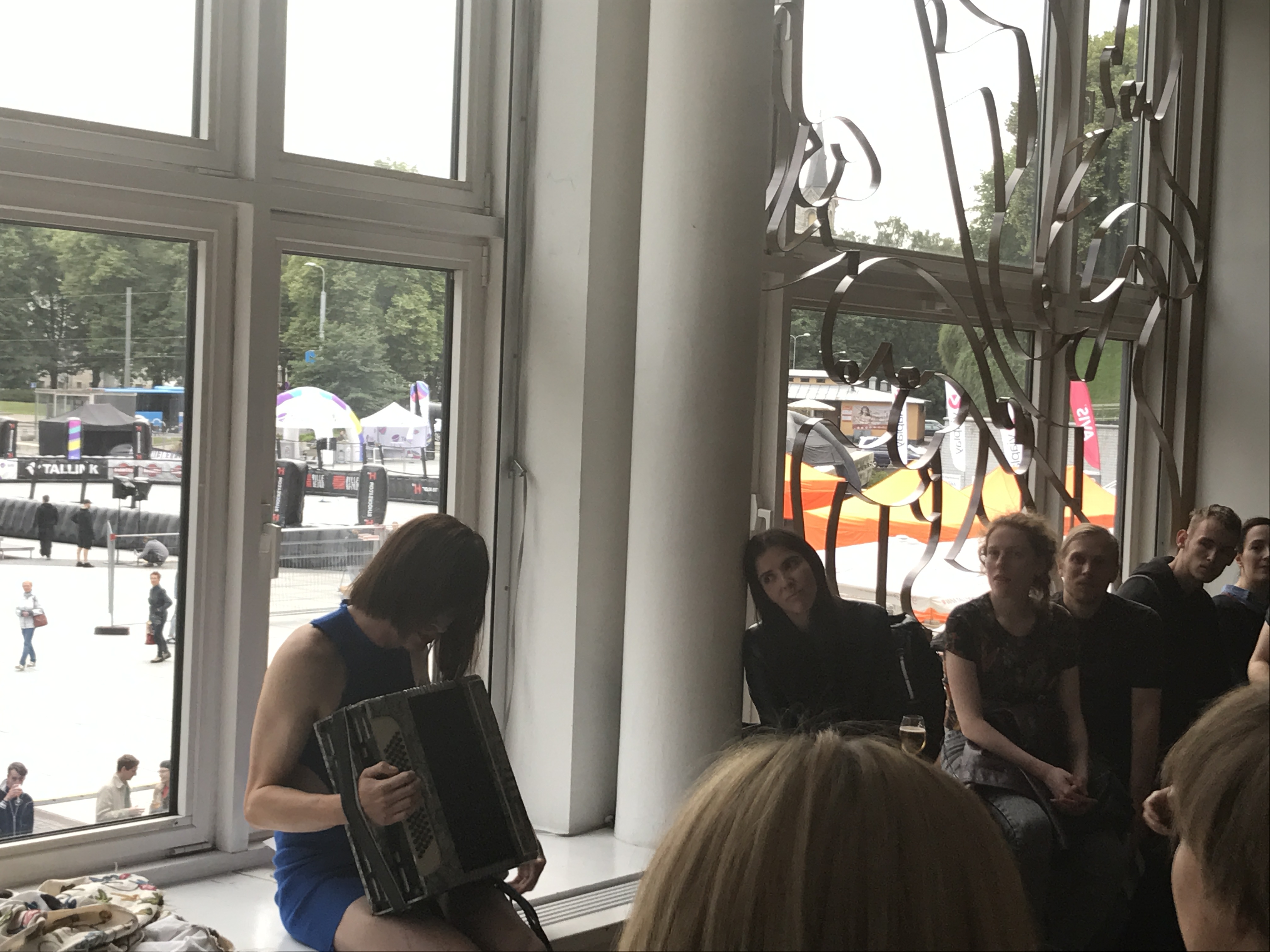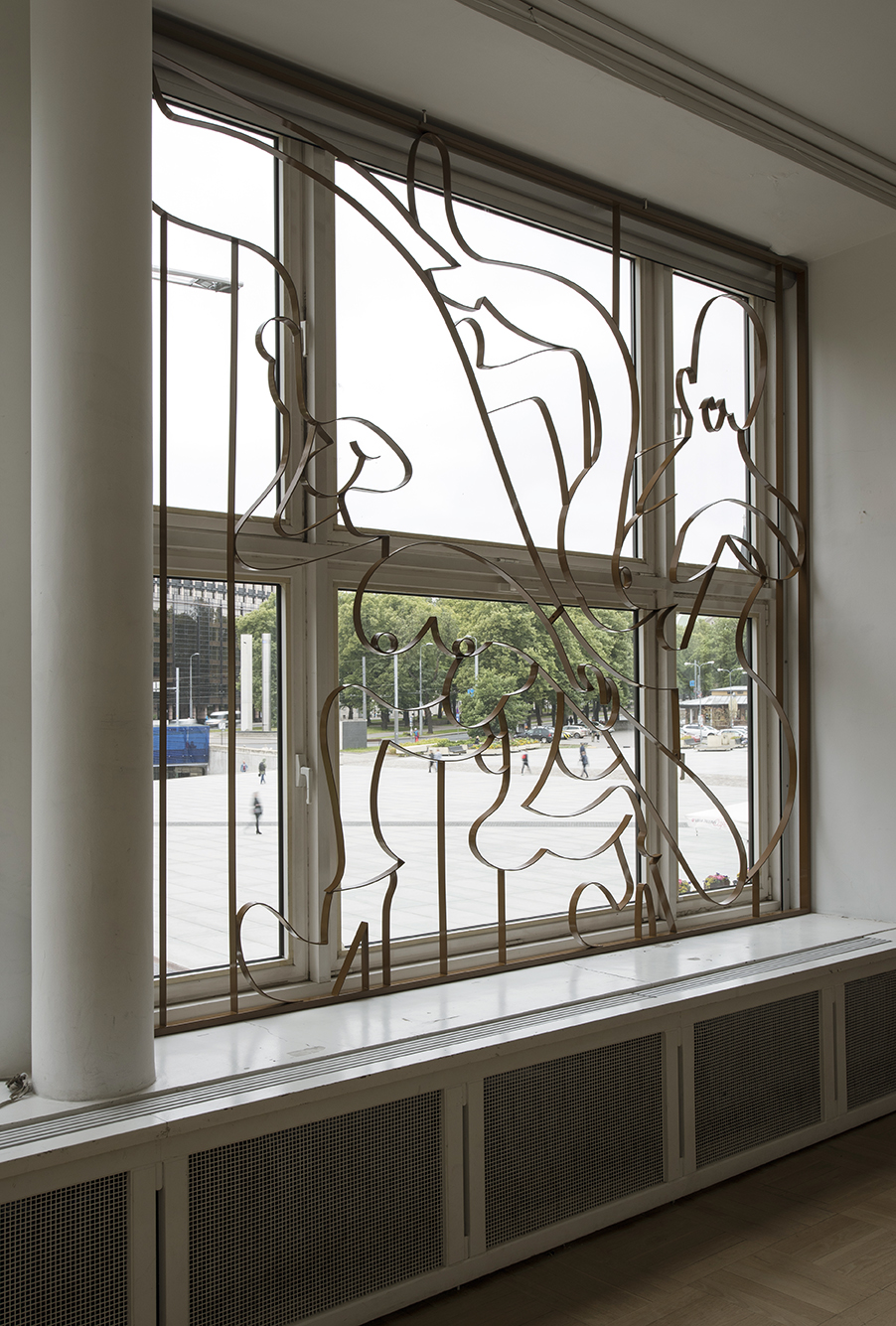The Baltic Triennial 13. GIVE UP THE GHOST
30 June 2018 – 02 September 2018
Tallinn Art Hall
Chief curator: Vincent Honoré
Commonplace bizarreness is the delightful term that describes the disjunctive cognition of dreams—certain breaks of rationale that do not strike us as bizarre as they would in waking life. Being able to recognize a person despite a difference in appearance is one such disjunction, while the interobject, (“I dreamt of something between a cat and toaster oven) is another. It is dream logic, in which rationality must give way to an intuitive and immediate understanding of a situation.
Dream logic is all that should be relied on when engaging with the work of Ola Vasiljeva, though the impetus is to find narratives in her installations. It is tempting to try to decipher the clues that have been left for us—to believe that a drama has been staged and the key to its emotional climax, to the beginning and the end, is to be found among characters and their props. Instead, Vasiljeva urges the viewer to forget the narrative impulse, unlearn this desire for resolution, for character development, for drama and to delve into the realm of the unconscious.
This is not to say that fiction has no place here—indeed, the liberty that fiction affords is central to the artist’s practice, perhaps most obviously evident in The Oceans Academy of Arts (OAOA), at once an amorphous, anonymous artist’s collective, semi-fictional institution, and experimental platform that probes at the porous divisions of contemporary art and its actors. The same desires that led to Vasiljeva founding OAOA—engaging with non-hierarchical systems, methods of unlearning, paradigms outside of society’s established and constrictive norms—are the life-blood for the rest of her practice. Her installations are born from intuition, not logic, and are the result of time spent with the space and its location, objects found in the area, and the unfolding of a relationship between these elements and Vasiljeva’s own productions. Her sculptures and drawings, often in glass, ceramic, and metal, belie both her fascination with the inherent qualities of material and an ability to tease out suggestive evocations from them. This, along with the architecture itself, co-habituates the space with other material (tools, notes) that further disregards hierarchy and the accepted definitions of “art” or “exhibition” or “artwork”. These all become symbols—carriers for the associations the viewer will bring to the work, rather than the inverse.
For BT13, these symbols have been pared down to perhaps the most evocative in a series of steel sculptures. Drawing is another key component to Vasiljeva’s practice—not quite unconscious doodles, they are nonetheless an intuitive and direct channeling of idea to form. Influence from caricature, satire, coded or symbolic illustration is evident in Mister Sister Cabbage, one such dream-like character. This cabbage figure is an interobject, not quite this, not quite that, playfully alluding to notions of non-binary gender identity among other things in its resistance to categorization. Other figures enter this dreamscape in what might be called the “interspace” of an art context—marginalized areas usually deemed unfit for the exhibition of artworks. If there is a key to be found to interpret Vasiljeva’s dreams, it will be an ambiguous one—with poetry and intuition as the guiding principles, radical for its elusiveness and disregard for the efficiency and productivity so cherished in the waking world.
Ana Iwataki, April 2018
 Home
Publications
Info
OAOA
Home
Publications
Info
OAOA

